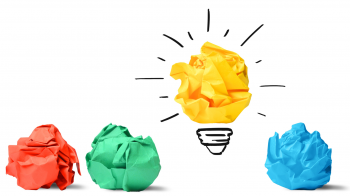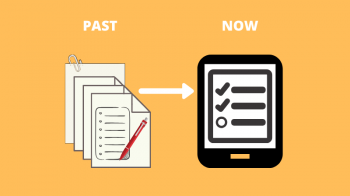
Kaizen is a Japanese word for “Change for the better” or it is also referred to as “Continuous Improvement”. So it is a journey and not a destination, it is a mindset as opposed to being a specific tool. It is a culture that needs to changed & adopted by organizations. It uses personal creativity and ingenuity to identify problems and then develop and implement ideas to solve those problems. Kaizen philosophy says that everything can be improved and everything can perform better or more efficiently. It helps to identify 3 MU’s – Muda (wastes), Mura (variation/ inconsistency) and Muri (strain/ burden on people & machines).
Kaizen is a continuous improvement that is based on certain guiding principles:
- Good processes bring good results
- Go see for yourself to grasp the current situation
- Speak with data, manage by facts
- Take action to contain and correct root causes of problems
- Work as a team
- Kaizen is everybody’s business
What is Lean?
Lean is opposite to fat and it often focuses on removal of ‘wastes’ sometimes referred to as ‘muda’ in Japanese. Operations that fail to create value for the end customer are deemed “wasteful.”Although the basic Lean model was introduced more than 100 years ago, it has continued to evolve over time, from Henry Ford’s continuous assembly lines for the Ford Model T, to the concept of interchangeable parts used by Eli Whitney and Samuel Colt, to the Toyota Production System. These concepts, in addition to a multitude of others, have come together to formulate what we know today as Lean manufacturing.
Now let’s find out the Environment Impact Assessment with Lean & Kaizen Tools
Environmental concerns are a part of the lean concept. Emissions to air and water, as well as the generation of solid/hazardous waste, represent a waste of production (that is, no value to the customer), just as surely as the need for protective equipment (such as gloves and earplugs) is, and that eventually lean would address them.
Lean usually helps the environment without really intending to. A Shingo Prize-winning study that EPA commissioned found that through Lean, many companies were saving money by taking steps that also benefited the environment, even when they were not consciously trying to do so. “Environmental” wastes, such as excess energy or water use, hazardous waste, or solid waste, present largely untapped opportunities to the lean practitioner. This is obvious if one steps back to consider the overall goals of lean manufacturing continually improving production efficiency.
More efficient production means less energy used per unit produced. It means less material resources are used per unit produced, and materials (and energy, for that matter) are used or reused more efficiently. Aside from the obvious savings on production costs, this more efficient use means not only less energy and raw materials consumed, but also less material emitted to air and water, and less solid/hazardous waste generated.
Examples of Environmental Gain from Production Process Kaizen
General Motors: An assembly plant evaluated paint booth cleaning operations; cleaning took place every other day. They discovered that the automated section of the painting operations only needed to be cleaned once a week, as long as the cleaning was thorough and bigger holes were cut in the floor grating to accommodate thicker paint accumulations. More efficient cleaning techniques and solvent recycling were also implemented.
Production gain: Reduction in cleaning frequency reduced downtime and improved production flow.
Environmental gain: Use of purge solvents was reduced by 3/8 gallons per vehicle. VOC emissions from purge solvents were reduced 369 tons in the first year these modifications were implemented.
Goodrich Aerostructures: A facility shifted to lean point-of-use chemical management systems. Goodrich personnel worked with suppliers to get just-in-time delivery of chemicals in smaller, right-sized containers.
Production gain: Delivery of right-sized containers to the point-of-use (either in work kits or by designated water spiders who courier materials to the point-of-use) reduced wasted worker movement and downtime. Shifting to right-sized containers of chemicals reduced inventory and minimized the chance of chemicals expiring on the shelf. Eliminated the need for four 5000 gallon tanks containing methyl ethyl ketone, sulfuric acid, nitric acid, and trichloroethane, thus eliminating the need to address risk management planning and other chemical management requirements for the tanks.
Environmental gain: Right-sized chemical containers reduced chemical use and hazardous waste generation. Minimized the waste generated through chemicals expiring in inventory. Eliminating the four 5000 gallon tanks eliminated the potential for large-scale spills.
Now let’s throw some light on the Environmental Waste: An Overlooked Savings Opportunity
Companies usually do not consciously target “environmental” issues such as energy or water use, solid or hazardous waste, or chemical hazards, in their lean initiatives. Typically, environmental costs and impacts are considered overhead. Thus they tend to be hidden from the cost evaluation of a specific production process
Lean manufacturing confers very real benefits by reducing the costs of production and more efficiently using capital. If lean manufacturing also incorporates environmental considerations, it can help a company achieve many other long-term goals, such as environmental sustainability and maintaining a good relationship with the public.
Environmental Expertise Can Help Achieve Lean Goals
Lean manufacturing provides the opportunity for businesses to collaborate with EPA and other environmental agencies — either by working together directly to address a specific concern or by using environmental experts as a source of information and tools that lean practitioners can find helpful. For many years, EPA has promoted the concept of “pollution prevention,” — eliminating pollution from the production process rather than installing costly “end of pipe” controls. Pollution prevention assistance providers have acquired years of expertise in finding ways to eliminate waste. They do audits with manufacturers, suggesting ways to save energy and reconfigure production processes to minimize the wastes generated, while at the same time, making the kinds of efficiency improvements that lean manufacturing also seeks out.
Conclusion: While not every company is ready for this step, EPA encourages companies to consider it, and views the lean journey as an excellent way to start the environmental journey. EPA’s goal is to maximize the environmental benefits of lean by raising the awareness of the linkage between lean and the environment.

